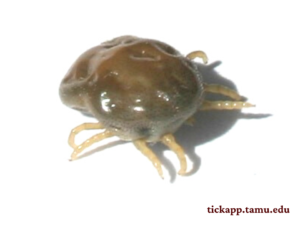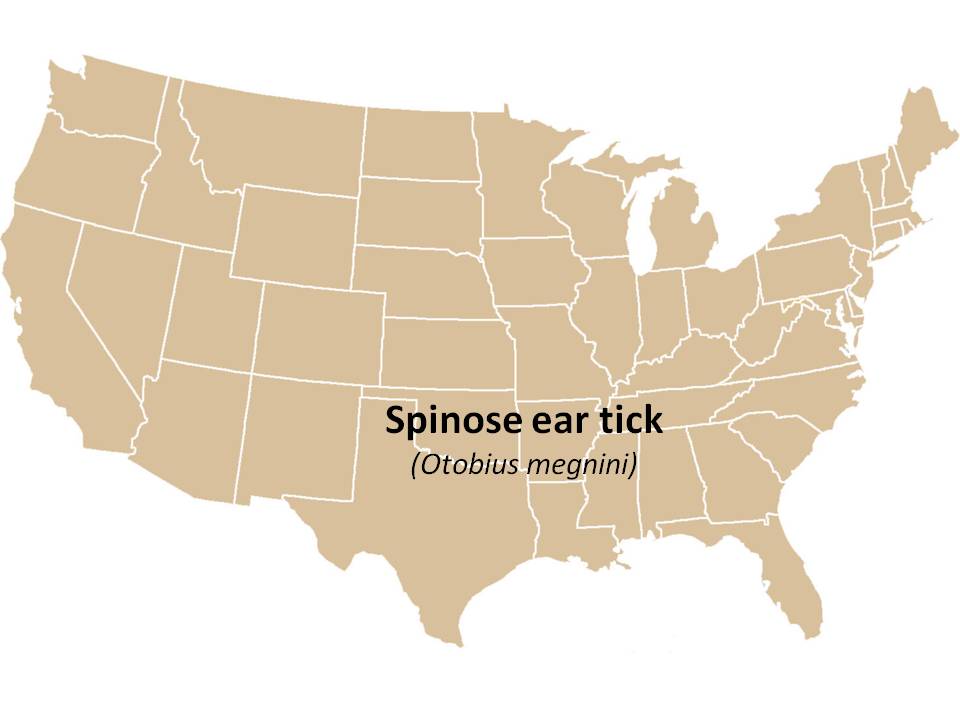
Species: Otobius megnini (Dugès)
Description: Larvae and nymphs of this Argasid (soft tick) species are gray to light brown in color and are common parasites of livestock. Nymphs have well developed chelicerae with pronounced spines present on the anterior regions of the cuticle. Adults are non-parasitic, and typically measure 4 to 8 mm long.

Distribution: The known distribution of this tick extends from western Canada (British Columbia) throughout the US into Mexico, Central and South America, Africa, and India.
Hosts: Cattle, horses, mules, sheep, goats, cats, and dogs; wild canids, lagomorphs, elk, white-tailed deer, mountain sheep and goats. Humans are also known to be parasistized.
Biology: The spinose ear tick utilizes a single host in completing its lifecycle. Larvae ascend vegetation to await the host then crawl into the inner portion of the outer ear to attach and feed, emerging as a first and second-instar nymph. Second instar nymphs are spiny in appearance (hence their name) and may require 5 weeks to several months to complete feeding. This duration provides numerous opportunities for dispersal of these ticks to new areas travelled by the host animal. Second-instar nymphs detach and leave hosts to molt on the ground to the adult stage. Emergent adult spinose ear ticks lack feeding dentition and subsist on what remains of the nymphal bloodmeal. Adults usually mate within a few days and females oviposit up to 500 eggs over a 2-4 week period that generally require a 3 week incubation for larval hatch. Large infestations of cattle may cause blockage of the ear canal, causing severe irritation and discomfort, exhibited by restlessness and head turning in affected animals. While immatures can be problematic year-round, parasitism of hosts is typically highest during late winter and spring.
Associated Disease Pathogens: There are no known disease pathogens associated with this ticks species. However, tick infested animals are subject to secondary microbial infections due to feeding wounds and the accumulation of tick feces and cast exuviae from molting. In addition, severely infested animals are prone to maggot infestations as a resulting from flies laying eggs in the deteriorating environment.
